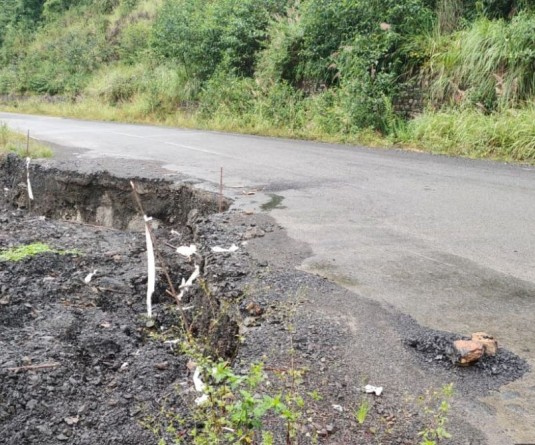Kandi Range Cultural Troupe of the Rengma Nagas presenting Ben Kesi. (Morung Photo)
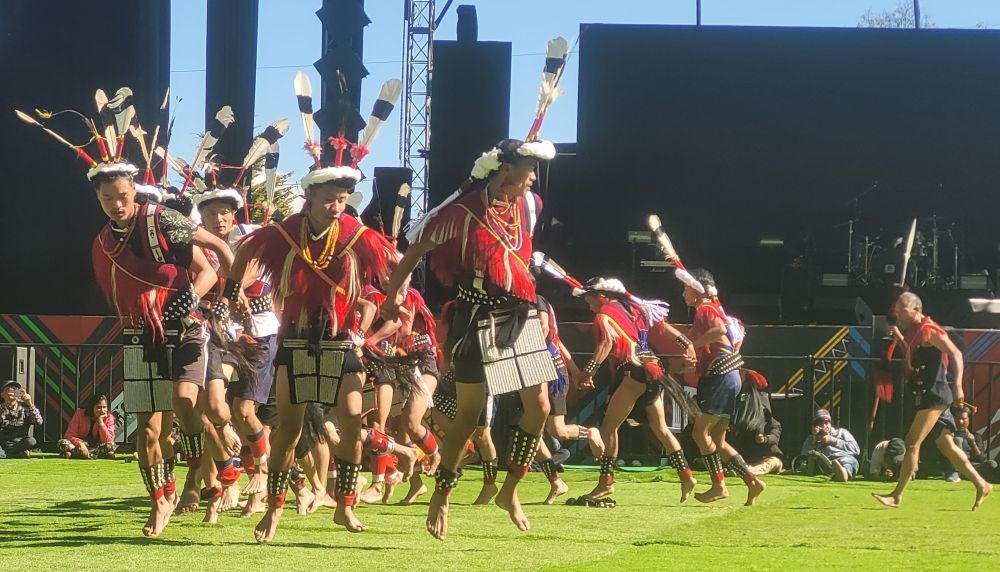
Our Correspondent
Kisama | December 4
The lineup of the ‘Cultural Connect’ on day four of the Hornbill festival at Naga Heritage Village, Kisama on Sunday consisted of a number of dances, songs and other presentations, displaying the rich cultural heritage of the many communities that make up the Naga collective.
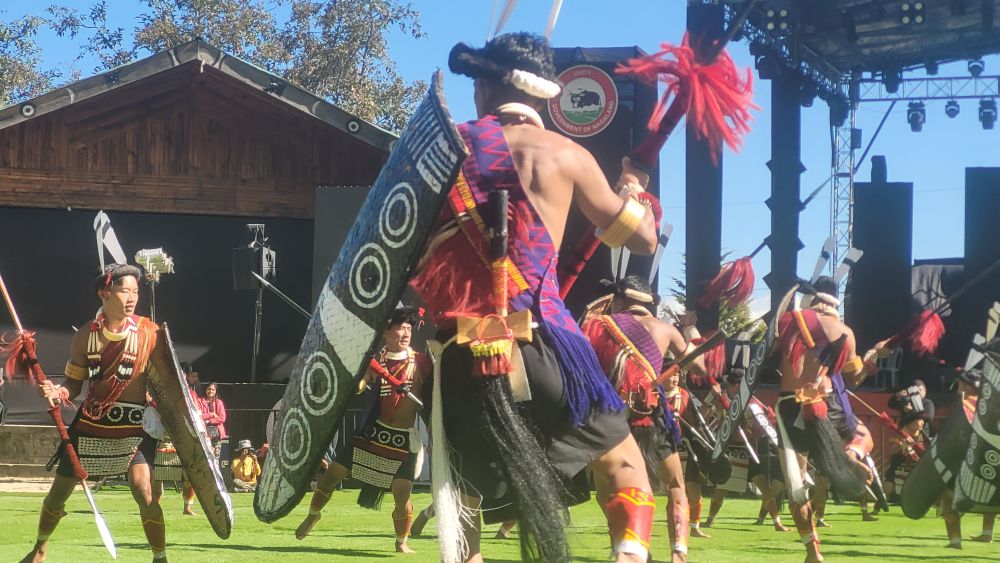 Ao Nagas performing Nokinketer Yar. (Morung Photo)
Ao Nagas performing Nokinketer Yar. (Morung Photo)
Nokinketer Yar: The presentations included ‘Nokinketer Yar,’ a warrior dance of the Ao Nagas, presented by the Khensa Cultural Club, Mokokchung.
The sprightly warrior’s dance is accompanied by ceremonial head hunting ululation which is sounded by warriors before the start of a battle or after the end of the battle when the head of an enemy is taken.
Dividing themselves into three groups, the warriors begin ululating, each group responding to the other and vice-versa. The ululating comprises ‘O’ sounds which rise to a crescendo and ends with ‘A-hook’ and finally culminates with the ‘awa-wa’ sound.
Traditionally, the dance was performed only by the warriors and comprises movements which depict their preparation for the battle. The dance is led by a commander who devises all the battle plans and the strategy.
The commander is considered as the chosen one and he represents the group or his army whenever a single soldier or warrior has to fight against the enemy representative. He was given the title ‘Rigo Noba.’
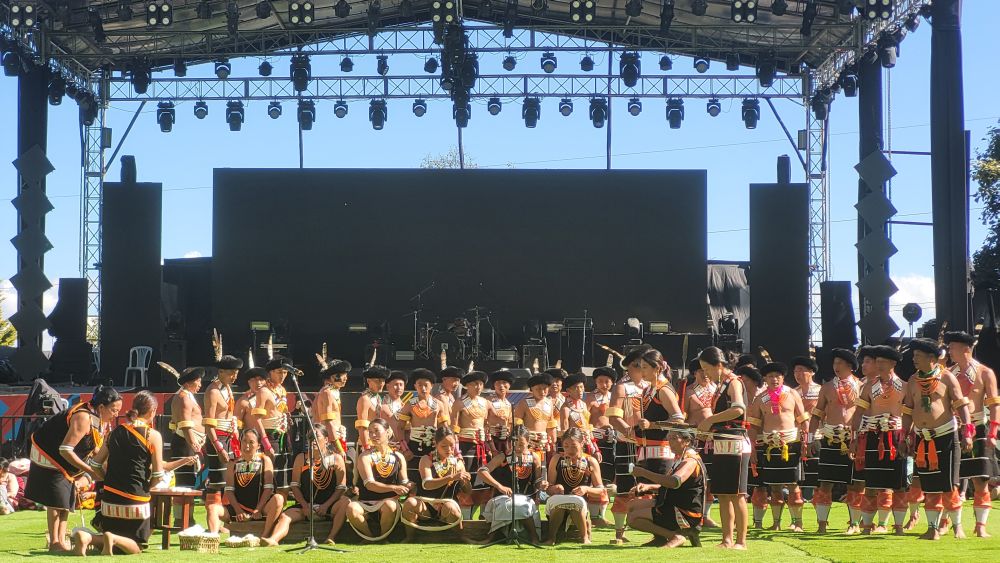 Chakhesang troupe presenting Nohüli. (Morung Photo)
Chakhesang troupe presenting Nohüli. (Morung Photo)
Nohüli: The Middle Khomi Village Cultural Troupe, representing the Chakhesang Nagas also performed ‘Nohüli,’ a folk song that was sung by the men-folk.
During forefathers’ time, unmarried girls when they attained the age of 10, formed a peer group of 6-8 girls and slept together in the house called ‘Thethice’.
In some places it is called `Morung’ (dormitory), an institution of learning. Here, the elders trained the youngsters to learn folksongs, spinning, weaving, stitching, etc.
During festivals and special occasions, the men-folk used to go to these places and sing ‘Nohüli’ in praise of the girls.
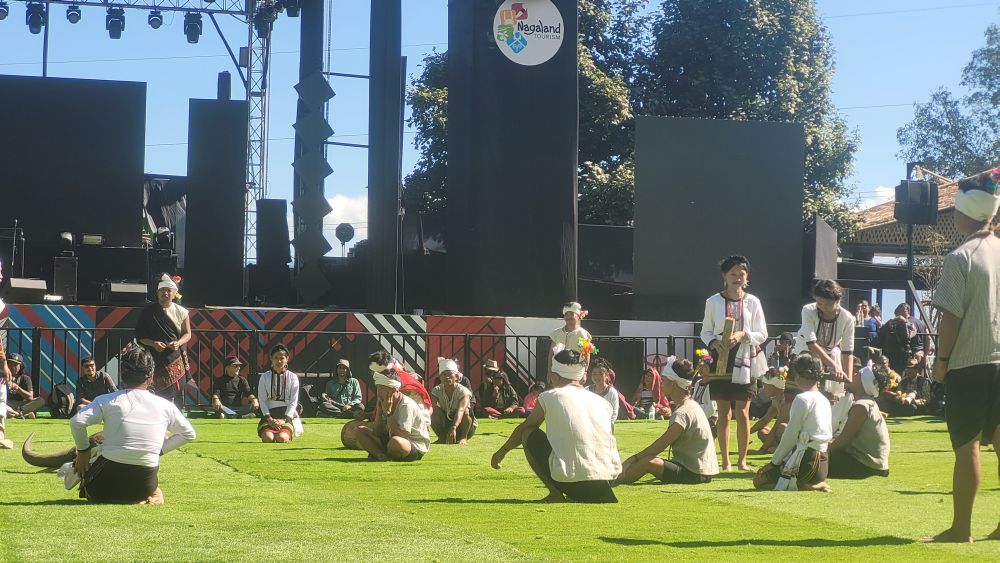 Kuki Cultural Troupe presenting Savailhun. (Morung Photo)
Kuki Cultural Troupe presenting Savailhun. (Morung Photo)
Savailhun: Similarly, the Kuki Cultural Troupe of New Chalkot, Peren performed ‘Savailhun’ which means grand reception of bountiful hunting.
When a sole hunter ventures out into the deep jungle to hunt down wild animal for festivals and is successful in his hunt, he carries his bounty and heads back to his village. On his way home the village hearing of his song of valour, gives him a grand reception which only a bountiful hunter deserves.
The hunter along with the villagers march into the village with pride and joy and the village chief then acknowledges the successful hunter by offering him and the male counterparts Vaiju (rice beer).
Showing his superiority the hunter jumps around the lifeless animal shouting “Na Pun Kapu joulou, Napan Kapa joulou, nangin kei nei joulou,” which, roughly translated, is a declaration the age long tradition of having dominance over the rest of the villagers when it comes to hunting. This is followed by songs and dance of celebration to mark the reception of bountiful hunting.
.jpg) Lotha troupe performing Serulo. (Morung Photo)
Lotha troupe performing Serulo. (Morung Photo)
Serulo: A dance of joy— Serulo was presented by the Lotsu Cultural Troupe, representing the Lotha Nagas.
Serulo is performed by young men-folk during leisure time after the completion of all domestic works assigned to them for the day. People from all age groups gather to watch them perform their dances and other activities.
Ben Kesi: Meanwhile, the Kandi Range Cultural Troupe representing Rengma Nagas performed Ben Kesi, a traditional way of dancing and jumping, generally performed on festive occasions and successful head hunting raids.
In the tradition of ancestors, there was nothing more exciting than for a warrior to get the maximum heads of enemies as war trophies. The particular village, to which the headhunter belonged, celebrated the victory by dancing and jumping fully dressed in traditional attires.


